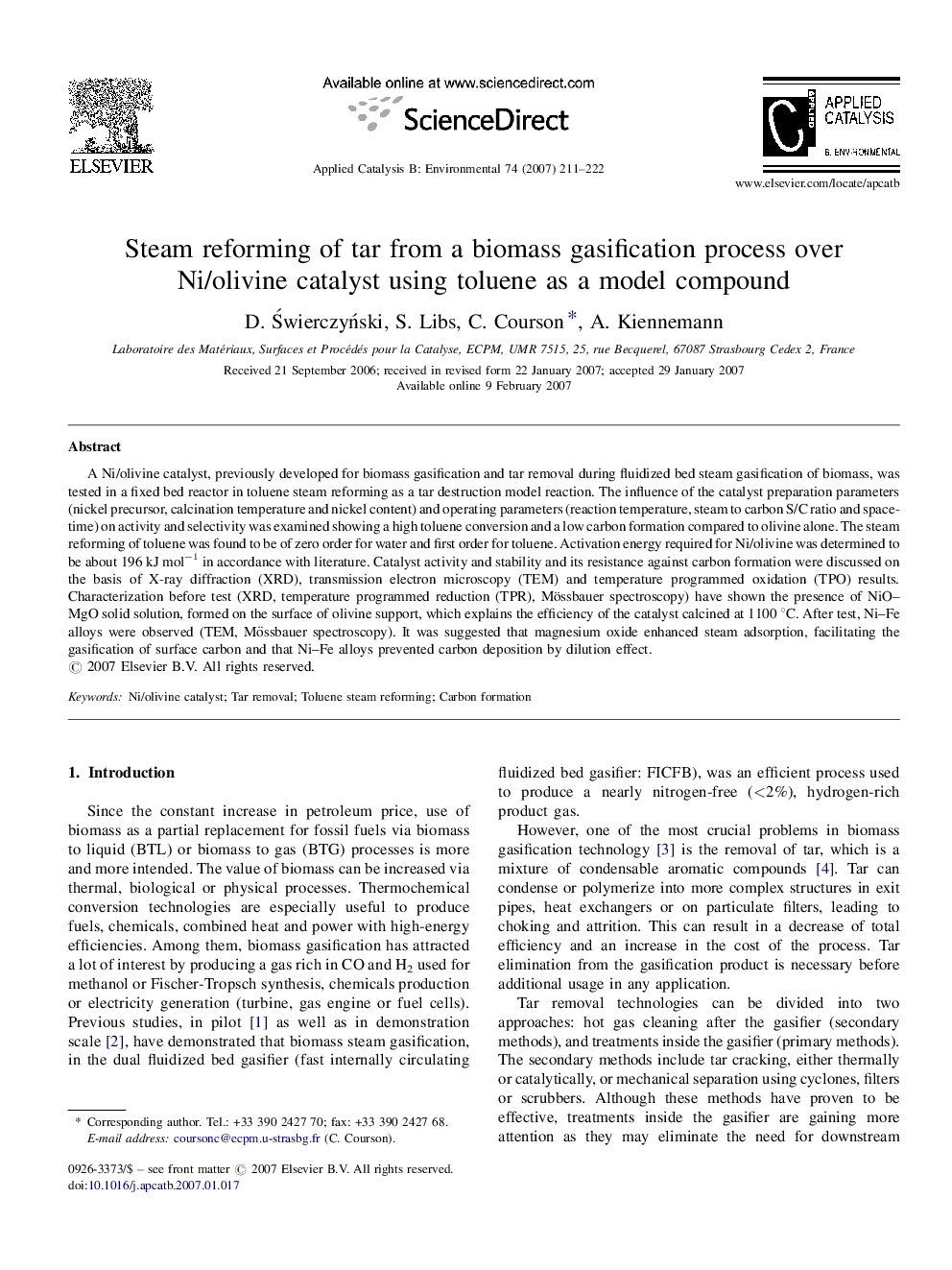| Article ID | Journal | Published Year | Pages | File Type |
|---|---|---|---|---|
| 48591 | Applied Catalysis B: Environmental | 2007 | 12 Pages |
A Ni/olivine catalyst, previously developed for biomass gasification and tar removal during fluidized bed steam gasification of biomass, was tested in a fixed bed reactor in toluene steam reforming as a tar destruction model reaction. The influence of the catalyst preparation parameters (nickel precursor, calcination temperature and nickel content) and operating parameters (reaction temperature, steam to carbon S/C ratio and space-time) on activity and selectivity was examined showing a high toluene conversion and a low carbon formation compared to olivine alone. The steam reforming of toluene was found to be of zero order for water and first order for toluene. Activation energy required for Ni/olivine was determined to be about 196 kJ mol−1 in accordance with literature. Catalyst activity and stability and its resistance against carbon formation were discussed on the basis of X-ray diffraction (XRD), transmission electron microscopy (TEM) and temperature programmed oxidation (TPO) results. Characterization before test (XRD, temperature programmed reduction (TPR), Mössbauer spectroscopy) have shown the presence of NiO–MgO solid solution, formed on the surface of olivine support, which explains the efficiency of the catalyst calcined at 1100 °C. After test, Ni–Fe alloys were observed (TEM, Mössbauer spectroscopy). It was suggested that magnesium oxide enhanced steam adsorption, facilitating the gasification of surface carbon and that Ni–Fe alloys prevented carbon deposition by dilution effect.
